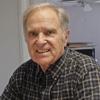COLUMN
The year was 1962, a tumultuous one in the life of our church, and in mine as well. On Oct. 11, Pope John XXIII opened the Second Vatican Council, reading a declaration in which he rejected the thinking of “the prophets of doom who are always forecasting disaster.” Stressing the council would be pastoral, not doctrinal, in nature, he said the church did not need to reformulate dogma, but rather teach Christ’s message in light of the modern world’s ever-changing trends. He then exhorted the assembled bishops to use “the medicine of mercy rather than the weapons of severity” in the documents they would produce. The council set our church on a renewed pastoral path, but opened a fault line visible to this day.
1962 was the first year I emerged out of the comfort of a completely Catholic environment into the wider world. That year I left Marquette High School in Milwaukee for Stanford University in California. Stanford was nonsectarian by charter, in effect meaning Protestant. The most striking symbol of the university’s attitude toward religion was Stanford Memorial Church, which stood boldly at the entrance. Inside, only nondenominational Protestant liturgies were permitted. Catholic students biked two miles off campus to St. Ann Chapel in Palo Alto. Simple and stunning, the chapel was a gift from Clare Booth Luce in memory of a daughter who died while at Stanford.
Stanford, reflecting change in the wider culture, became more open to cultural, sexual and religious diversity. Nevertheless, it took a tedious student campaign, a court order, and a subsequent vote by the Stanford Board of Trustees to change a clause in the university charter that allowed the first Catholic Mass on campus in 1966.
I think back to that time, to that struggle for a Catholic liturgical foothold on campus in Memorial Church, as I ponder the recent actions by Phoenix Bishop Thomas J. Olmsted, who took his Eucharist and went home from St. Joseph’s Hospital (see story) after officials there refused to buckle to his demands. Denuding St. Joseph’s of an official Catholic designation, he forbade Masses and the Blessed Sacrament within the building “to avoid the impression that the hospital is authentically Catholic.” Heck, airports have Masses and none I know are named after saints.
Emerging from the controversy will be more questions about what constitutes Catholic identity and who gets to declare it. Also emerging could well be new -- and for Olmsted unwelcome -- understandings of the limits of episcopal authority.
We will continue to follow the story. For now, what seems to strike many about Olmsted’s decisions has been the absence of that “medicine of mercy” of which Pope John spoke on the council’s opening day. As NCR columnist Jamie Manson writes in her column this week (see story):
Vatican II aimed to bring our church into the modern world just as it was moving into the postmodern era. In the postmodern context people find authority in more than one place and when they do, it is because that authority seems earned to them. Largely gone in the public arena are the days when authority is accepted unquestioned because it has been designated from above. Some might find this tragic. Others, a relief. But it is a fact that we ignore at evangelical peril.
My guess is that more than a few bishops, while willing to admit Olmsted has the ecclesial authority to designate which institution in his diocese is officially Catholic, wish he would not have drawn the line where he did, in a tragic medical case that pitted mother against fetus. In the process, he placed ebbing episcopal authority in a virtually untenable place.
What the bishop does not seem to understand is that his scattered excommunications, no matter how painful to those involved, can never begin to match the penetrating pain of the unnamed mother who came to realize she would never look into the face of the child she had hoped to birth.
Olmsted’s moral certitude is lifeless, leaving no place for compassionate Christianity. In the wake of his actions, the absence of public support from his episcopal brothers is both telling and oddly comforting. The Phoenix bishop, it seems, lives inside a small circle, or is one lonely and disappointed man.
On a broader plain, there is no return to 1962, to our Catholic ghetto, as inviting as this might be to some. No, the only choice is to walk forward together, respectfully and in open conversation, especially concerning those gray areas of Catholic morality that can be so divisive. It is at times not easy. But the alternatives are worse.
Those mind-bending and faith-shaping currents let loose in Rome at the council continue to rock and shape us. At the same time, they have prepared us, as we would never have imagined possible a half century back, to take on the challenges and ownership of faith as engaged, thinking, adult Catholics.
And for this, we should all be very grateful indeed.
[Thomas C. Fox is NCR Editor. This column appears in the Jan. 7 edition of NCR as an editor's note titled "The medicine of mercy."]
|
For more information on the Phoenix hospital and Bishop Olmsted, see NCR's continuing coverage:
Advertisement |



